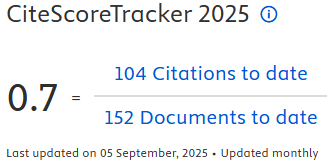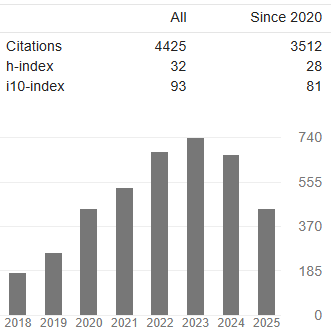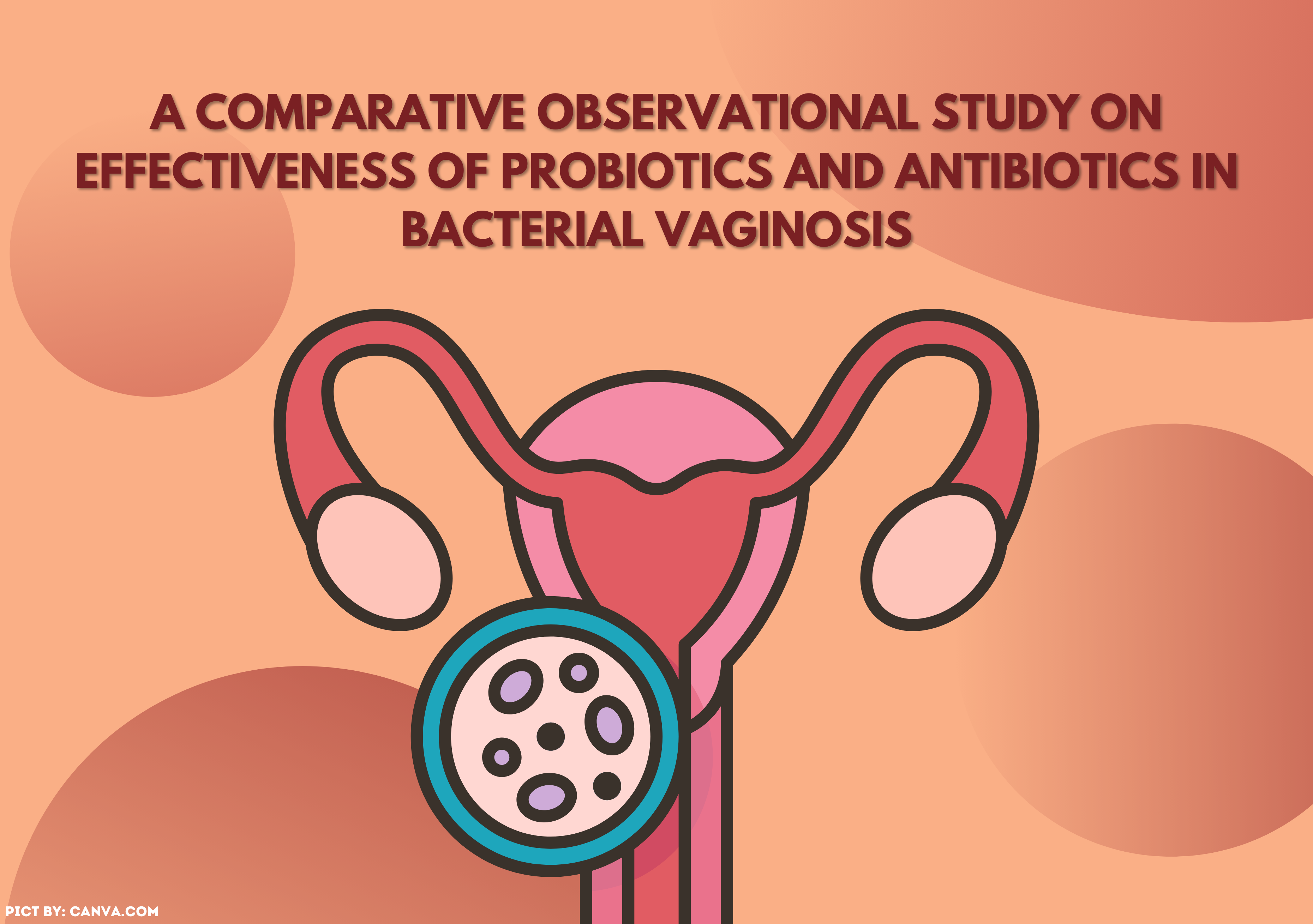GAMBARAN PERSEPSI PENYAKIT TERHADAP KESEHATAN FUNGSI PARU PADA PASIEN ASMA DI SURABAYA
Downloads
Aburuz S, McElnay J, Gamble J, Millership J, Heaney L. 2005. Relationship between lung function and asthma symptoms in patients with difficult to control asthma. J Asthma, 42(10):859-64. https://doi.org/10.1080/02770900500371187
Adams RJ. 2010. Improving health outcomes with better patient understanding and education. Risk Manag Healthc Policy, 3:61–72. https://doi.org/10.2147/RMHP.S7500
ASH. Action on Smoking and Health. 2015. ASH Research Report: Asthma and Smoking, (online),
Broadbent E, Petrie KJ, Main J, Weinman J. 2006. The Brief Illness Perception Questionnaire. Journal of Psychosomatic Research, 60:631– 637. https://doi.org/10.1016/j.jpsychores.2005.10.020
Cleveland Clinic. 2017. How to Use a Peak Flow Meter, (online),
Departemen Kesehatan RI. 2009. Pedoman Pengendalian Penyakit Asma. Jakarta: Direktorat Jenderal PP & PL Departemen Kesehatan.
Fortenko O, Zeki A, Schuster G, Davis C, Allayee H, Stephensen C. et al. 2011. Asthma patients with specific genotypes identified for fish oil. California Agriculture, 65(3):112-117.https://doi.org/10.3733/ca.v065n03p112
Global Initiative for Asthma (GINA). 2017. Global Strategy for Asthma Management & Prevention (Update), (Online),
Goswami B, Roy AS, Dalui R, Bandyopadhyay A. 2014. Peak Expiratory Flow Rate – A Consistent Marker of Respiratory Illness Associated with Childhood Obesity. American Journal of Sports Science and Medicine, 2(1):21-26. https://doi.org/10.12691/ajssm-2-5A-8
Ilango S, Cristy A, Saravanan A, Sembulingam P. 2014. Correlation of Obesity Indices with Peak Expiratory Flow Rate in Males and Females. IOSR Journal Of Pharmacy, 4(2):21-27. https://doi.org/10.9790/3013-040202021-27
Ittersum MW, Wilgen CP, Hilberdink WKHA, Groothoff JW, Illness perceptions in patients with fibromyalgia. Chapter 4. Patient Educ Couns, 74(1):53-60. https://doi.org/10.1016/j.pec.2008.07.041
Jindal SK. 2014. Effects of Smoking on Asthma. Supplement to Journal of The Association of Physicians of India, 62:32-37.
Kapteina, A.A, Klokb, T., Moss-Morrisc, R., Brand, P. 2010. Illness perceptions: impact on self-management and control in asthma. Current Opinion in Allergy and Clinical Immunology, 10:194–199. https://doi.org/10.1097/ACI.0b013e32833950c1
Kelly HW, Sorkness C. 2011. Asthma. Dalam DiPiro J, Talbert R, Yee G, Matzke G, Wells B, Posey M. editors. Pharmacotherapy: A Pathophysiologic Approach, 8th ed. McGrawHill. New York. US.
Lorensia A, Lisiska N. 2011. Illness Perceptions Study of Asthma Treatment Compliance in Pharmaceutical Care. Jurnal ANIMA Indonesian Psychological Journal, 26(3):184-188. https://doi.org/10.25026/jtpc.v1i3.26
Lorensia A, Wahjuningsih E, Canggih B, Lisiska N. 2011. Pharmacist's Strategies in Treating Asthma Bronchiale Outpatient. Jurnal of Tropical Pharmacy and Chemistry, UNMUL, 1(3):177-191.
Lorensia A, Wahjuningsih E, Sungkono EP. 2015a. Hubungan Pengaruh Tingkat Keparahan Asma dengan Kualitas Hidup dalam Memicu Timbulnya Depresi pada Pasien Asma Kronis. Jurnal Ilmiah Sains & Teknologi UBAYA, 8(2):21-30.
Lorensia A, Queljoe DD, Santosa KA. 2015b. Kelengkapan Informasi Mengenai Cara Penggunaan Peak Flow Meter yang Diberikan kepada Pasien Asma di Apotek. Jurnal Ilmiah Manuntung (JIM) Sains Farmasi dan Kesehatan, Akademi Farmasi Samarinda, 1(2):8-18.
Lorensia A, Yulia R, Wahyuningtyas IS. 2016. Hubungan Persepsi Penyakit (Illness Perception) dengan Kontrol Gejala Asma pada Pasien Rawat Jalan. Media Pharmaceutica Indonesiana (MPI), 1(2):92-99. https://doi.org/10.24123/mpi.v1i2.191
Medscape. 2017. Peak Flow Rate Measurement, (online),
Moss-Morris R, Weinmann J, Petrie KJ, Horne R, Cameron LD, Buick D. 2002. The Revised Illness Perception Questionnaire (IPQ-R). Psychology and Health, 17(1):1–16. https://doi.org/10.1080/08870440290001494
Naing, L., Win, T., Rusli, B.N. 2008. Medical Statistic: Practical Issues in Calculating the Sample Size for Prevence Studies, Archives of Orofacial Sciences 2006; 1:9-14.
National Center for Chronic Disease Prevention and Health Promotion. 2011, Data Source with Asthma Content: Behavioral Risk Factor Surveillance System (BRFSS), (Online),
Ng TS. 2012. Brief Illness Perception Questionnaire (Brief IPQ). Journal of Physiotherapy, 58:202. https://doi.org/10.1016/S1836-9553(12)70116-9
Oemiati R. 2013. Faktor-faktor yang Berhubungan dengan Penyakit Asma di Indonesia. Media Litbang Kesehatan, 20(1):41-49.
Pinnock H. 2015. Supported Self-Management for Asthma. Breathe (Sheff), 11(2):98-109. https://doi.org/10.1183/20734735.015614
RISKESDAS. 2008. Laporan Riset Kesehatan Daerah (RISKESDAS) 2007. Litbang Depkes.
Roberts MH, Mapel DW. 2012. Limited Lung Function: Impact of Reduced Peak Expiratory Flow on Health Status, Health-Care Utilization, and Expected Survival in Older Adults. Am J Epidemiol, 176(2): 127–134. https://doi.org/10.1093/aje/kwr503
Sohn, K. 2015. The Height Premium in Indonesia. Economics & Human Biology, 16:1-15. https://doi.org/10.1016/j.ehb.2013.12.011
Suryadinata RV., Lorensia A., Aprilia AP. 2017. Profil vitamin d pada pasien asma dan non-asma dewasa di Surabaya. The Indonesian Journal of Public Health. 12(1):106-117. https://doi.org/10.20473/ijph.v12i1.2017.106-117
Yuniarti KW, Dewi C, Ningrum RP, Widiastuti M, Asril NM. 2013. Illness perception, stress, religiosity, depression, social support, and self management of diabetes in Indonesia. International Journal of Research Studies in Psychology, 2(1):25-41. https://doi.org/10.5861/ijrsp.2012.185
Zimmerman EB, Woolf SH, Haley A. 2014. Understanding the Relationship Between Education and Health: A Review of the Evidence and an Examination of Community Perspectives. The National Academy of Sciences, (online), https://doi.org/10.31478/201406a
- The authors agree to transfer the transfer copyright of the article to The Indonesian Journal of Public Health effective if and when the paper is accepted for publication.
- Authors and other parties are bound to the Creative Commons Attribution-NonCommercial-ShareAlike 4.0 International License for the published articles, legal formal aspect of journal publication accessibility refers to Creative Commons Attribution-NonCommercial-ShareAlike 4.0 International License (CC BY-NC-SA), implies that:
- Attribution ” You must give appropriate credit, provide a link to the license, and indicate if changes were made. You may do so in any reasonable manner, but not in any way that suggests the licensor endorses you or your use.
- NonCommercial ” You may not use the material for commercial purposes.
- ShareAlike ” If you remix, transform, or build upon the material, you must distribute your contributions under the same license as the original.































